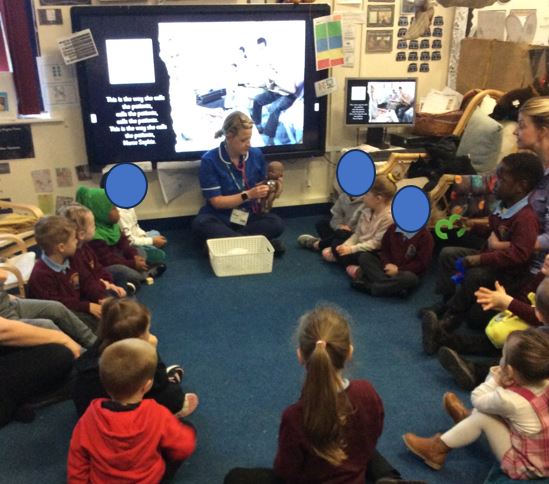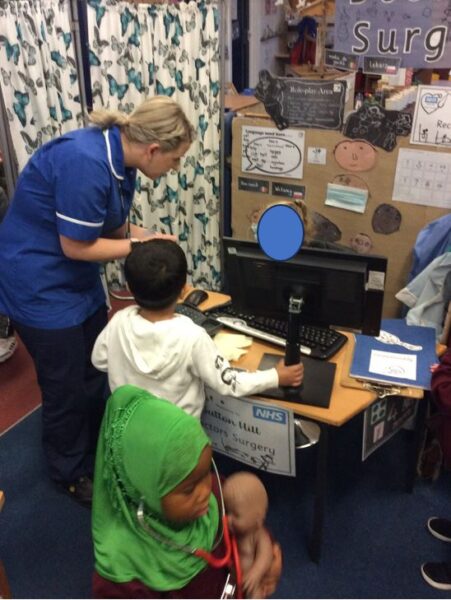Children have access to a wide range of role-play resources in the EYFS. They can use these in order to develop their vocabulary, imagination and story-telling skills. Our Home Corner is a constant feature in our setting in order for all children have access to nurturing, homely resources that reflect their lives and culture and those of others.
Practitioners enhance the role-play provision to link to the overarching theme during each term.
The Doctors Surgery has just opened in order for children to develop, use and apply their knowledge of the human body, as we focus in on ‘Our Unique Selves’ this term.
Practitioners plan cultural capital experiences, carefully at key points, so that children can access and use resources purposefully. Today Sophie the nurse visited. The children learnt about her uniform, equipment and role. They learnt new vocabulary such as patients, stethoscope and prescription and the meaning of these words by exploring resources and singing repeated songs.


